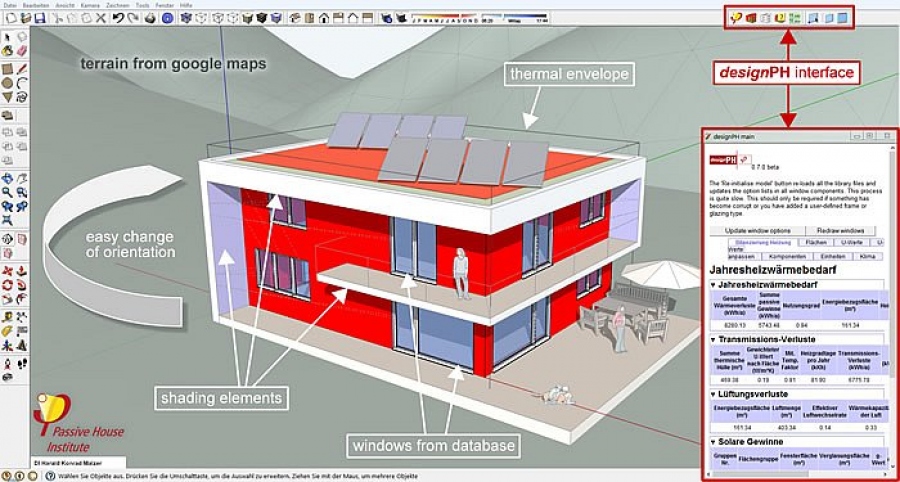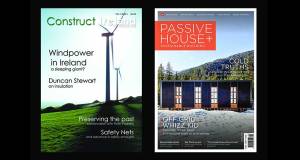
- Product News
- Posted
Passive House Institute launches 3D design tool
The Passive House Institute has announced the launch of a 3D model interface that allows for the graphic input of energy related design data.
Here's the full lowdown from the Passive House Institute:
Passive House planning has never been more convenient. The new designPH, a 3D model interface developed by the Passive House Institute, allows for graphic input of energy related design data. Details relating to the thermal building envelope and shading are entered automatically and can be optimised if necessary. The treated floor area can be gradually refined in order to simplify the design process. The results can be exported into the Passive House Planning Package (PHPP 8) with just a few clicks.
The SketchUp plugin contains a variety of climate data as well as a database of suitable building components with their key parameters. U-values can also be assigned to transparent building components. This way, various combinations of window frames and glazings can be evaluated in terms of their thermal performance at an early design stage. Additionally, thermal bridges can be defined; and the effect of each change in the building design on the energy balance is displayed directly in the 3D tool.
"The new designPH will completely change the way we work with the PHPP. Checking a new design’s compliance with the passive house standard has never been easier, faster and more accurate," says Harald Konrad Malzer, member of the designPH development team at the Passive House Institute. The need for such a 3D tool – not only for the young generation of designers – became increasingly evident through feedback from PHPP users. Now, it is finally available.
The new designPH tool was developed as an add-on to the PHPP planning tool which has been well-established internationally for many years. The first version of the 3D tool is available in combination with the new PHPP 8. This latest version of the Passive House Planning Package offers a variety of new and improved features including advanced options for the calculation of renewables, enhanced compatibility, new components and new climate data sets. Making use of all these features is even more convenient with the designPH tool. Detailed information about the 3D tool and ordering can be found online at: www.passivehouse.com







